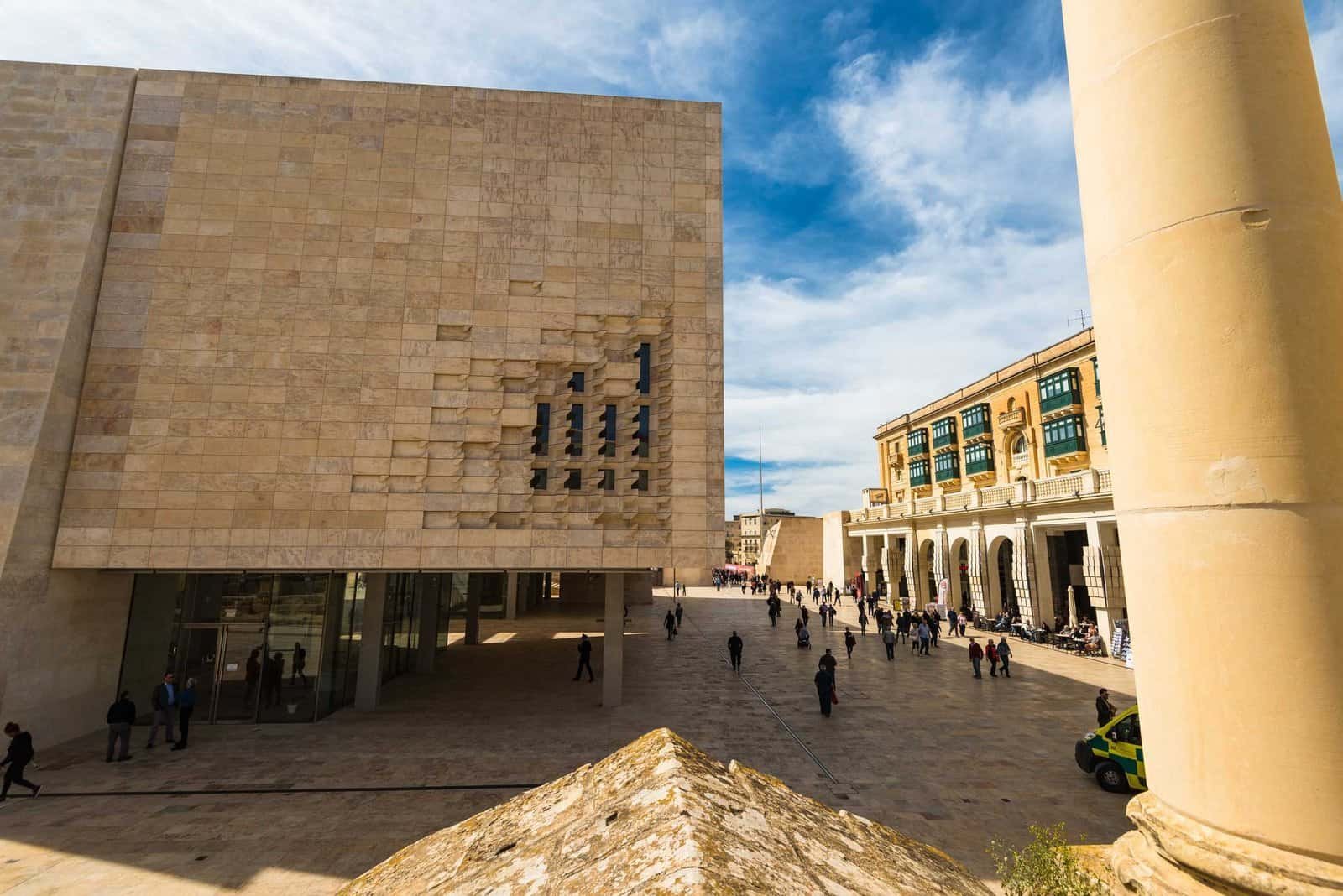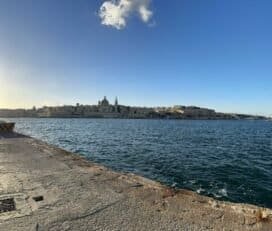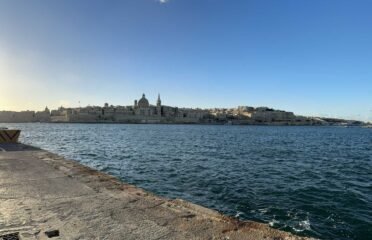Parliament Building – Valletta, Malta
Overview
The Parliament Building of Malta is a striking modern architectural landmark at the entrance of Valletta, blending contemporary design with the city’s historic fabric. Completed in 2015, the building was designed by world-renowned Italian architect Renzo Piano as part of the ambitious City Gate Project, which also included the redevelopment of the nearby Royal Opera House ruins and Valletta’s main entrance. Constructed from Maltese limestone, the Parliament Building has a distinctive, sculpted façade that resembles weathered stone blocks — an intentional nod to Malta’s landscape and heritage. Today, it serves as the seat of Malta’s House of Representatives while also standing as a bold symbol of the nation’s democratic future.
Why Visit
- See one of Valletta’s most controversial yet celebrated modern buildings
- Admire the innovative design of Renzo Piano, blending tradition and modernity
- Learn about Malta’s political life at the seat of its parliament
- Take photos of the striking limestone façade, especially at sunset
- Combine your visit with nearby landmarks like the Royal Opera House ruins and Tritons’ Fountain
Highlights
- Limestone Façade: The weathered stone effect was achieved by computer-controlled cutting, symbolizing Malta’s natural cliffs
- Sustainable Design: The building is energy-efficient, using natural light and ventilation
- Central Location: Positioned right at Valletta’s entrance, it greets all visitors to the capital
- Renzo Piano’s Vision: Part of a broader plan that reshaped Valletta’s gateway into a cultural hub
History & Cultural Significance
The idea of creating a modern parliament building was born out of Malta’s need for a contemporary seat of government that reflected its EU membership and democratic progress. Prior to this, the Maltese Parliament had been housed in the Grandmaster’s Palace, a 16th-century building not originally designed for legislative functions. The City Gate Project, commissioned in the early 2000s, tasked architect Renzo Piano with reimagining the entrance to Valletta. Despite heated debates and criticism from locals who feared that the modern design would clash with the city’s Baroque identity, the Parliament Building was completed in 2015. Today, it is widely recognized as a bold architectural statement that respects Malta’s heritage while embracing the future.
Typical Costs & Tickets
As the seat of Malta’s House of Representatives, the building is not open for free roaming, but guided tours are occasionally offered, usually organized for schools, cultural groups, or by appointment. Visitors can admire the exterior without cost, and tours of Valletta often stop here to discuss the architectural and political significance of the building. Prices for special tours, when available, vary depending on the provider.
Best Time to Visit
The Parliament Building can be admired year-round, but the best times to photograph it are during the golden hours of early morning or late afternoon, when the limestone façade glows against Valletta’s skyline. Evening visits are also memorable, as the building is beautifully illuminated, giving its textured surfaces a dramatic look. If you wish to combine your visit with nearby attractions, plan for a morning or afternoon walking tour of Valletta starting from the City Gate.
Nearby Experiences
The Parliament Building is located in Valletta’s City Gate area, one of the capital’s busiest cultural hubs. Directly opposite is the Royal Opera House ruins, transformed into the open-air venue Pjazza Teatru Rjal, also designed by Renzo Piano. Just a few steps away lies the Tritons’ Fountain, one of Malta’s most photographed landmarks. Beyond City Gate, Valletta’s pedestrian streets lead to attractions like St. John’s Co-Cathedral, the National Museum of Archaeology, and the Upper Barrakka Gardens with its panoramic views over the Grand Harbour.
Travel Tips
- Visit during daylight and evening to see the different effects of light on the limestone façade
- Combine your visit with a walking tour of Valletta that begins at City Gate
- Photography enthusiasts should use wide-angle lenses to capture the building’s geometry
- Respect security measures around the parliament — this is an active government building
- For cultural context, pair your visit with the nearby Royal Opera House and Tritons’ Fountain
Fun Facts & Local Legends
- The building was carved from over 7,000 cubic meters of Maltese limestone
- Its sustainable design means it consumes less energy than older government offices
- The façade’s design mimics the weathering of Malta’s cliffs and rocky landscapes
- Although controversial during construction, it is now praised as a bold architectural icon
- It was the first major building in Valletta constructed in the 21st century







